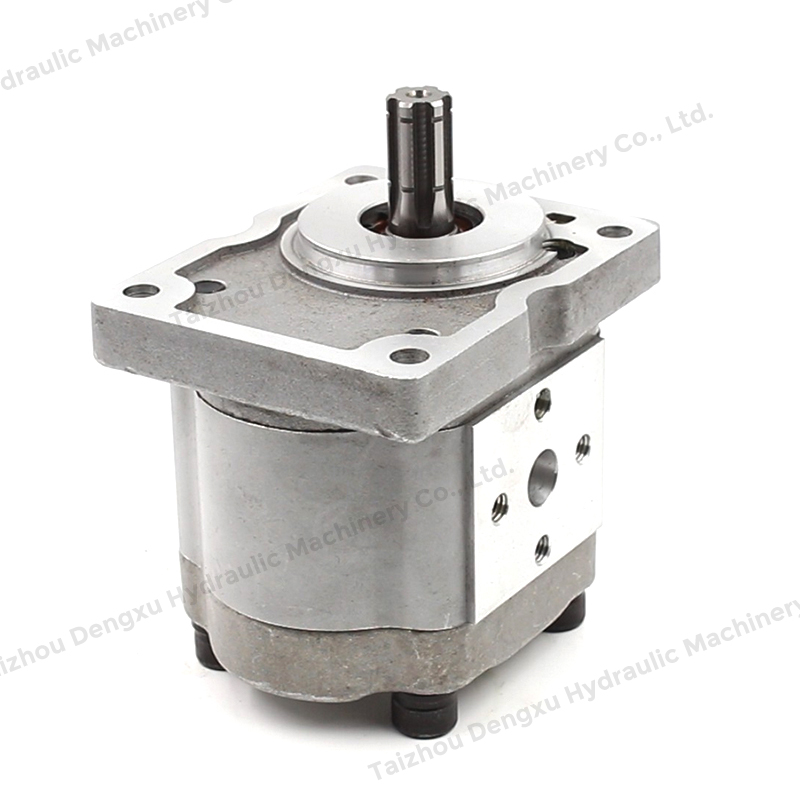Importance of Material Selection in Corrosion Resistance

The performance and longevity of a Hydraulic Vane Pump largely depend on the materials used in its construction. Since this type of pump operates in fluid environments—often containing water, oil, or chemical additives—the materials must be able to withstand exposure to potentially corrosive substances. Choosing the right materials is not only a matter of strength but also a key factor in enhancing corrosion resistance.
Operating Environment: Determines the exposure to water, chemicals, or other corrosive agents.
Material Compatibility: Ensures the pump components can resist chemical reactions.
Longevity and Performance: Durable materials reduce maintenance and extend service life.
For a Hydraulic Vane Pump, commonly used materials include stainless steel, bronze, and corrosion-resistant alloys. These materials are chosen for their ability to resist oxidation and chemical degradation over time. Stainless steel, for instance, contains chromium, which forms a protective oxide layer on the surface, preventing rust. This makes it a popular choice for pumps used in harsh or high-humidity environments. Bronze and nickel-based alloys are also for preventing corrosion, especially in systems that handle saltwater or other aggressive fluids.
Surface Treatment and Coating Techniques
Another essential factor in improving the corrosion resistance of a Hydraulic Vane Pump is the use of surface treatments and coatings. Even when durable materials are used, applying an additional protective layer can further extend the pump's life and maintain efficiency.
Plating and Coating: Nickel or chrome plating adds a barrier against corrosion.
Anodizing: Enhances the natural oxide layer of aluminum-based components.
Powder Coating: Provides both aesthetic appeal and surface protection.
Applying a coating helps prevent direct contact between the pump's surface and the working fluid. In the case of a Hydraulic Vane Pump, internal components like the rotor, vanes, and casing benefit significantly from protective coatings. These treatments not only improve resistance to corrosion but also reduce friction, which minimizes wear and enhances energy efficiency. Nickel plating, for example, creates a smooth and hard surface that resists chemical attack and oxidation, making it ideal for long-term operation.
Surface treatments also improve maintenance efficiency. A coated Hydraulic Vane Pump requires less frequent cleaning and inspection since the surfaces are less likely to accumulate debris or rust. This results in lower operational costs and greater reliability, particularly in industrial applications where downtime can be costly.
Use of Corrosion-Resistant Alloys and Advanced Materials
Modern engineering has introduced advanced alloys that significantly improve the performance of a Hydraulic Vane Pump under corrosive conditions. These materials combine the strength of traditional metals with enhanced resistance to oxidation, pitting, and chemical reactions.
Stainless Steel Alloys: Offer a strong and durable structure with minimal corrosion risk.
Nickel-Based Alloys: Resist corrosion in both acidic and alkaline environments.
Composite Materials: Reduce weight and resist chemical damage.
Nickel-based alloys, such as Inconel and Monel, are particularly effective for pumps used in marine or chemical-processing environments. Their resistance to both chloride-induced corrosion and oxidation at high temperatures makes them ideal for demanding conditions. For some modern designs, composite materials or ceramic coatings are introduced in the Hydraulic Vane Pump components to achieve a balance between strength, corrosion resistance, and cost efficiency.
By integrating these materials, manufacturers ensure that the Hydraulic Vane Pump maintains consistent performance even when exposed to aggressive fluids or fluctuating temperatures. This helps reduce the risk of component failure, minimizes fluid contamination, and extends the overall operational life of the system.

 Search
Search
 English
English 中文简体
中文简体 русский
русский